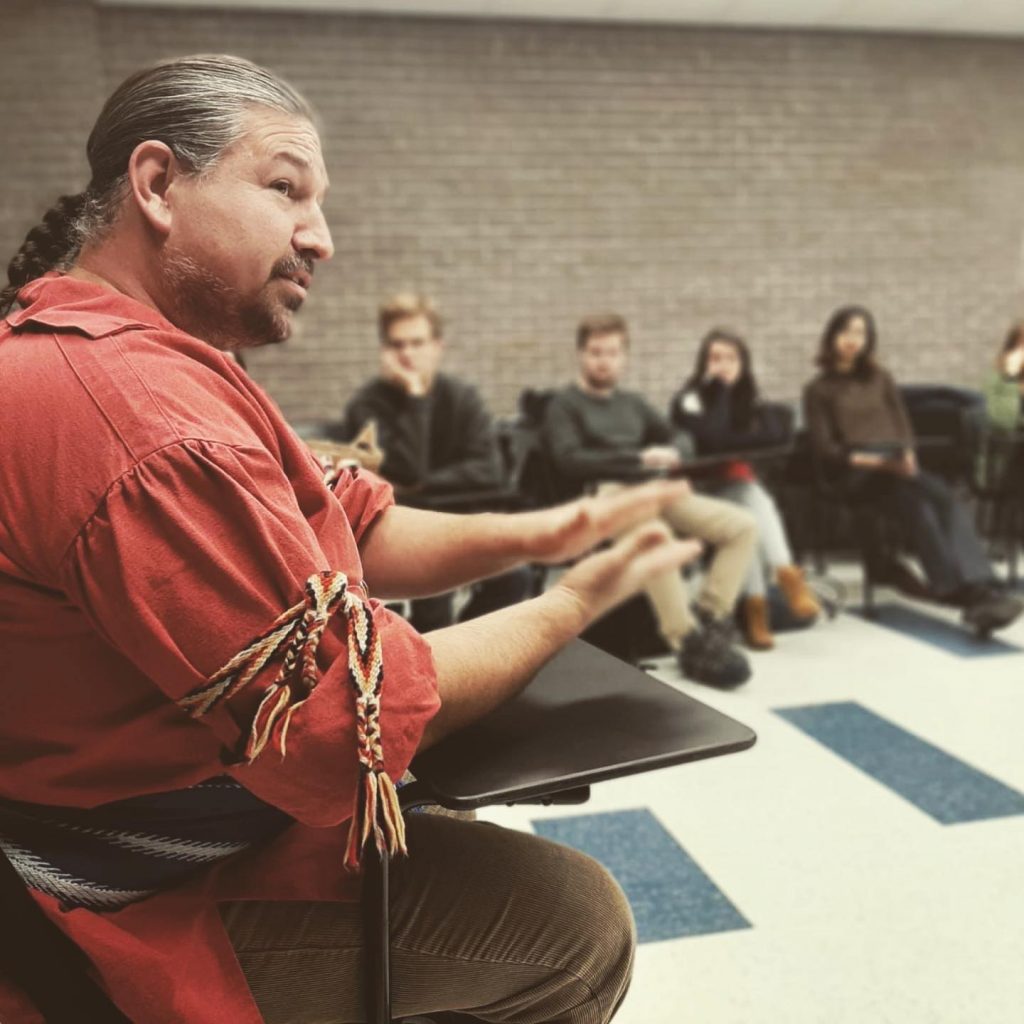By Jemma O’Malley
On November 7th, members from McGill Students for Amnesty International were fortunate to attend a workshop focusing on water and the history of the birchbark canoe. The discussion-based workshop began with a brainstorming activity surrounding local water issues as well as thinking about water as having its own rights. The conversation ranged from the recent report of lead-laced drinking water, the pollution of local waterways, and the severely inadequate access to clean water among Indigenous communities.
A representative from Waterlution, an action orientated organization focusing on water sustainability, lead the group in a ‘water embodiment’ activity. Each participant shared a word they associated with water and physically embodied the meaning of the word by using hand gestures and facial expressions. This allowed students to connect with the meaning and importance of water in their everyday lives.
The Story of the Birchbark Canoe
After an initial conversation about water issues in Canada, Metis Canoe Builder Christian Pilon shared the history and cultural significance of the birchbark canoe. He explained that the canoe was the primary means of transportation for the Omàmiwinini, Haudenosaunee, and Anishinaabe peoples among many other Indigenous groups. They allowed nomadic peoples to travel and trade in the interior of Canada and were later used by voyagers in the fur trade. The watercraft facilitated the sharing of knowledge, resources, land, and water which continue to bridge the ancestral stories of Indigenous and French-Canadian heritage.

Christian Pilon builds birchbark canoes in the same way as his ancestors by only using materials found in nature. Following the traditional stories of his past, Pilon describes the vessel’s construction as being a reflection of the composition of the human body. Birchbark is waterproof like human skin and forms the exterior of the vessel. The frame and interior are made from cedar that behaves like muscles to strengthen and support the boat. Like tendons, roots from the spruce tree are flexible and are used to tie pieces of the canoe together. Finally, the sap of the spruce tree seals the canoe just as blood seals wounds on the human body.
Pilon views the canoe as being a symbol of connection and continues to use it as a way to build relationships between people with their ancestors and paddlers of the past.
Big Takeaways
Students were asked to reflect on their experience at the end of the workshop and discussed personal plans of action to implement on a daily basis. A common takeaway for many students was the power of sharing. Christian Pilon explained the historical importance of sharing for his Anishinaabe ancestors and how it allows for knowledge to be distributed for the benefit of entire communities. Not only do stories play a central role in connecting people to their history but allow people to learn from one another. In Anishinaabe culture, storytelling is done in circles where everyone can be seen, heard, and respected. This way of sharing knowledge is inclusive and interactive, allowing everyone an equal opportunity to participate and share their own ideas.
A few students discussed the idea of sharing in their everyday lives and described feeling frustrated with the competitive nature of learning on university campuses. A goal for these students is to actively work to build a learning environment that is collaborative and encourages people to contribute their unique knowledge and experiences.
Other students focused on another theme of Christian Pilon’s storytelling, specifically that of the relationship between humankind and nature. For his ancestors, nature was honoured and given the same respect as is given to a human being. Canoe builders ask the birch tree for permission before using some of it’s bark, roots, and sap. Treating nature with the same respect as people allows it to be appreciated for everything it provides. Water, minerals, and trees are essential to the survival of humankind, yet can all exist peacefully without human intervention.
People need nature, nature does not need people.
Learn More
Learn more about Metis Canoe Builder Christian Pilon and his work connecting Canadians to their ancestry through the art of storytelling. Share what you learn and learn from those you share with!
Check out Waterlution and their global network of innovative and sustainable water programs. They are dedicated to drawing attention to the globe’s shared interest, water.
Amnesty International is teaming up with Indigenous water defenders to take action on the polluted waterways across Canada. Despite the fact that contaminated water is severely affecting Indigenous communities, the Canadian government has done little to address these human rights violations. Join the campaign and take action here.

